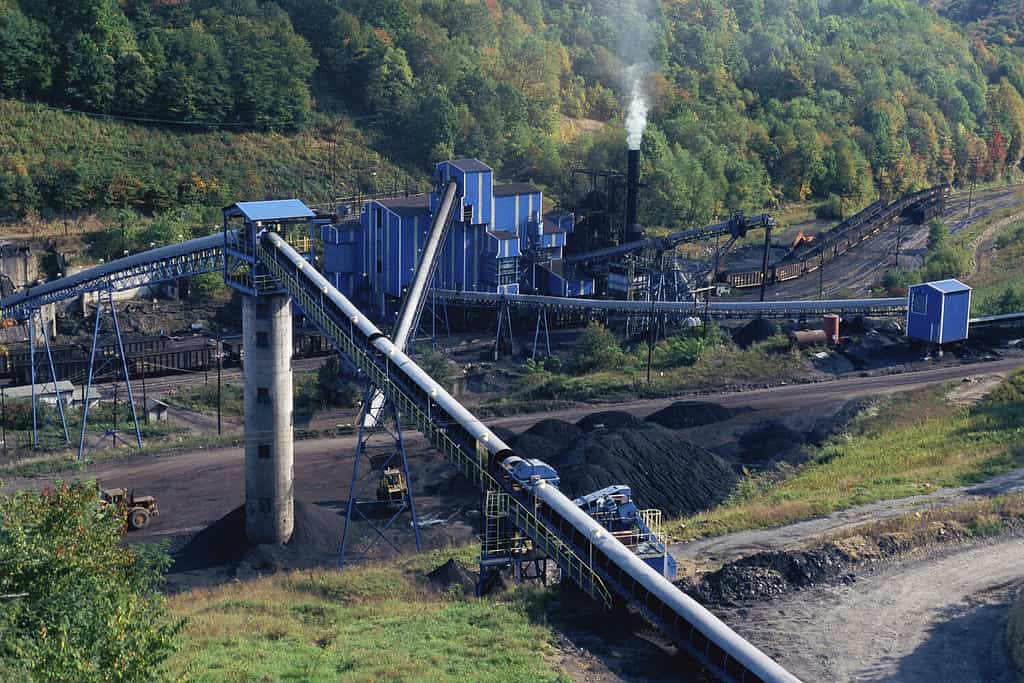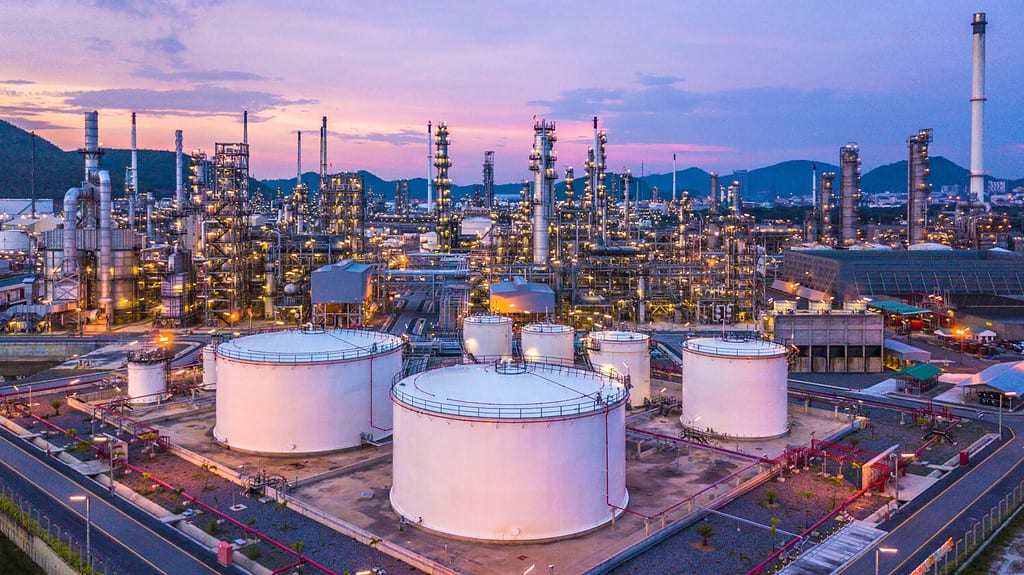The top five carbon dioxide-producing nations in 2021 were China, the United States, India, Russia, and Japan with the largest source of emissions coming from burning fossil fuels for transportation, heat, and electricity. Transportation alone accounts for 37.2 percent of emissions; electricity generation comes in second with 31.4 percent. Carbon dioxide (CO2) is formed by carbon combustion and is found in the respiration of living organisms. It is a colorless, odorless, non-poisonous gas. The combustion of petroleum products and natural gas for cooking and heating emits CO2, nitrous oxide (N2O), and methane (CH4.)
Though not considered an air pollutant, concentrations of CO2 in the atmosphere have increased due to human activity. Natural sources of CO2 can be found in most animals when exhaled as a waste product. It occurs naturally during the decomposition of organisms, by weathered carbonate rocks, forest fires, and volcanic eruptions. Without CO2 plants will die, without plants, the earth’s food sources cease to exist. Therefore, it is necessary to sustain life. The oceans are the largest reservoirs of CO2, geological reserves of fossil fuels are next, plants and soil follow, and finally the atmosphere. Carbon continuously and naturally moves between the atmosphere and the earth.
States that Emit the Most Carbon Dioxide

Coal mining is a major contributor to carbon dioxide emissions.
©Joseph Sohm/Shutterstock.com
Which state has the worst emissions per capita?
Wyoming has the highest per capita emissions as of 2021 at 94.3 metric tons because they are the top coal-mining state producing nearly 40 percent of the nation’s supply.
Which state has the lowest emissions per capita?
The Northern Mariana Islands and American Samoa territories are at 0.0 percent.
| State | CO₂ (Metric tons) |
|---|---|
| Texas | 663.5 |
| California | 324 |
| Florida | 226.3 |
| Pennsylvania | 213.5 |
| Ohio | 194 |
| Louisiana | 188.6 |
| Illinois | 184.2 |
| Indiana | 166.4 |
| New York | 156 |
| Michigan | 147.8 |
Why are These States the Highest Producers of CO₂?
Texas: Leading the country in natural gas and crude oil production, their gas and oil fields produced 70.9 million tons of CO2 in 2021. Additionally, high transportation emissions resulted from commuters in the state. And, they are the largest consumer of coal in the country.
California: Transportation is the main source of California’s high numbers with electricity production coming in second. Fires in the western states contributed to the problem. Additionally, the lack of compact housing development and the high cost of housing drive people farther inland to live.
Florida: Florida’s power plants are its largest polluters with energy and transportation contributing. Decomposing peat in the Everglades adds to their numbers.
Pennsylvania: Burning fossil fuels, methane from gas and oil systems, and coal mines are the reason for their high numbers. Industrial facilities, mines, and power plants all produce high emissions with most originating from southern Pennsylvania, particularly Pittsburgh.
Ohio: Coal-fired power plants are the root cause of this state’s high emission numbers, as well as manufacturing industries and transportation.
Louisiana: Industry accounts for most of Louisiana’s emissions. This state is also a big producer of gas and oil.
Illinois: Trucks, cars, and planes are the largest source of emissions here. Coal production is another source.
Indiana: Power and manufacturing plants from local industry are to blame with transportation emissions adding to their high numbers.
New York: Fossil fuels are consumed in high quantities in New York’s commercial and residential buildings because boilers and furnaces burn oil or gas for heat. Fuels burned for water and space heating take up nearly 40 percent of their numbers.
Michigan: Coal-fired and methane gas-fired power plants contribute to much of the carbon emissions in this state because many of them are outdated and inefficient.
States that Emit the Least Carbon Dioxide
| State | CO₂ (Metric tons) |
|---|---|
| Vermont | 5.6 |
| Rhode Island | 10.6 |
| Delaware | 13 |
| New Hampshire | 13.3 |
| Maine | 14.4 |
| South Dakota | 15.2 |
| Hawaii | 17.3 |
| Idaho | 20.5 |
| Montana | 28.5 |
| Connecticut | 36.6 |
Which States are Improving Their CO₂ Emissions?
Across the board, CO₂ emissions have fallen by 16.3 percent since 2000, but have risen 6.9 percent since 2020. Maine is the winner for most improved emissions with a decrease of 35.2 percent since 2000. Other states that have decreased their levels include:
| State | % decrease since 2000 |
|---|---|
| Maryland | -33 |
| Massachusetts | -31.8 |
| Indiana | -30.6 |
| New Jersey | -28.5 |
| Tennessee | -28 |
| Ohio | -27.3 |
| Georgia | -26.8 |
| New York | -26.5 |
| Kentucky | -24.3 |
However, not all states have such good news to report, the following states have increased CO₂ emissions since 2000.
| State | % increase since 2000 |
|---|---|
| Idaho | 30.8 |
| Nebraska | 13.3 |
| North Dakota | 10.2 |
| South Dakota | 6.5 |
| Mississippi | 2.8 |
Three states have decreased their carbon emissions since 2020, Mississippi (-0.2%), Virginia (-0.2%), and Wyoming (-1.9%.) All others have increased from 2020 to 2021 with Hawaii showing the highest increase of 16.2 percent. Those with the highest increases include:
States with the Greatest Increase in Carbon Since 2020
| State | % increase since 2020 |
|---|---|
| Hawaii | 16.2 |
| West Virginia | 14.9 |
| Arkansas | 13.3 |
| Iowa | 11.4 |
| Tennessee | 11.2 |
| Pennsylvania | 10.5 |
| Alabama | 10.1 |
| Kentucky | 10 |
| Maryland | 9.3 |
| South Carolina | 9.1 |
Sectors with Common Carbon Emissions

Oil refineries produce carbon emissions.
©Avigator Fortuner/Shutterstock.com
Natural causes of CO2 emissions come from respiration, ocean release, and decomposition. Human causes include the burning of fossil fuels such as natural gas, oil, and coal, deforestation, and cement production due to certain chemical reactions. When trees are cleared or disturbed, they will release CO2. Trees are the “lungs of the earth” because they release oxygen and absorb CO2.
Causes of rising emissions include:
- Increased livestock farming because animals, such as such as pigs, cows, and other farm livestock, emit greenhouse gases
- Using fertilizers containing nitrogen which produces nitrous oxide
- Fluorinated gases produced from products and equipment that use them
Sector
Commercial: Combustion of petroleum and natural gas products for cooking and heating emits carbon dioxide (CO2), nitrous oxide (N2O), and methane (CH4) causing 80 percent of the fossil fuel emissions for commercial and residential sectors according to a 2021 study.
Electricity generation: The generation, transmission, and distribution of electricity are contributors. Fossil fuel combustion used to power industry, business, and homes is the second largest polluter. The type of fuel used determines how bad it rates, but coal is the number one offender.
Residential: Gas used for refrigeration and cooling buildings, lighting, appliances, and ventilation emits carbon dioxide.
Industrial: Processes using fossil fuels and those that create chemical reactions such as the production of steel, cement, and chemicals are polluters. Many of these processes also use electricity which adds to the emissions produced. CO2 is a byproduct of the manufacturing of fertilizers, alcohol, and ammonia.
Transportation: Combustion of fossil fuels such as diesel and gasoline used to transport goods and people was the largest source of emissions in 2021 according to some. This includes domestic sources such as rails, ships, planes, passenger vehicles, trucks, lubricants, and pipelines. Diesel is a top polluter.
Agriculture: Rice production, agricultural soils, and livestock are contributors.
How to Reduce Carbon Dioxide?

Bamboo removes carbon dioxide naturally from the atmosphere.
©wjarek/Shutterstock.com
The most obvious way to reduce carbon dioxide is to use less fossil fuels and modify behaviors, here are some things we can do:
- Do not purchase water in plastic bottles
- Walk or bike places when possible
- Unplug devices and turn off lights when not in use
- Properly inflate tires and keep automobiles maintained
- Reduce meat and dairy consumption
- Switch to green energy
- Drive less, organize trips, and use public transportation when possible
- Do full loads of laundry
- Use the stairs, not the elevator
- Install efficient appliances and windows to conserve energy usage
- Buy fresh local produce to reduce transportation emissions
- Plant a tree, specifically oak trees which absorb the most CO2 followed by horse chestnut, American sweetgum, and black walnut
- Plants, such as bamboo, remove carbon dioxide naturally from the atmosphere and store it by photosynthesis
- Use LED lighting
Plants that absorb CO₂ at night include:
- Snake plant (Dracaena trifasciata)
- Aloe vera (Aloe vera)
- Areca Palms (Areca)
- Neem (Azadirachta indica)
- Gerbera (Gerbera)
- Tulsi (Ocimum tenuiflorum)
- Peepal (Ficus religiosa)
Reduction in the Transportation Sector
Fuel switching
Using fuels with lower carbon content reduces emissions as well as the production of energy from renewable resources. For example, take public buses that use renewable fuels, compressed natural gas, or are run on electricity. Drive electric, hybrid, or hydrogen cell vehicles. Use renewable sources instead of fossil fuels to generate electricity such as biofuel, geothermal, hydro, solar, and wind.
Improve fuel efficiency with technology, materials, and design
Develop more efficient vehicles such as electric and hybrid that store energy when braking and use it as power later. Reduce the weight of vehicles with new materials and aerodynamic resistance through better design.
Improve operating practices
Minimize fuel use by improving driving practices and keeping vehicles maintained. Reduce aircraft taxi time. Avoid unnecessary acceleration, braking, speeding, and engine idling. Improve ocean voyage fuel usage with better weather routing.
Reduce travel demand
Plan daily miles driven by employing pedestrian, biking, and commuter programs. For example, build bike paths, sidewalks, and public transportation to lower emissions from traditional transportation methods. Zone mixed-use areas to cluster businesses, stores, schools, and residences to reduce driving.
Reduction in the Industrial Sector
Direct emissions include burning fuel for heat or power, leaks in equipment or processes, or chemical reactions. Indirect emissions occur when burning fossil fuel to make electricity used by a facility to power machinery or a building.
Energy efficiency
Upgrade to more efficient technologies. For example, identify ways to use less energy to run equipment and industrial processes.
Fuel switching
Switch to fuels that emit fewer pollutants but provide the same amount of energy such as using natural gas instead of coal.
Recycling
Produce products from recycled materials rather than raw materials. For example, use scrap aluminum and steel instead of smelting aluminum or forging steel.
Carbon capture and sequestration (CCS)
CCS technologies reduce emissions in new and existing gas and coal-fired power plants and industrial processing. For example, this technology captures carbon from coal-fired smokestacks before it enters the atmosphere and transports it through a pipeline. It is then injected deeply into the earth at a properly selected location where it is safely stored.
Training and awareness
Train workers and make companies aware of ways to reduce or prevent emission leaks. For example, institute policies and procedures for sulfur hexafluoride (SF6), hydrofluorocarbons (HFCs), and perfluorocarbons (PFCs) to reduce leaks and accidental releases from equipment and containers.
Reduction in Commercial and Residential Sectors
Direct emissions include using fossil fuel for cooking and heating, waste management practices, and refrigerant leaks. Indirect emissions include electricity used by businesses or homes for appliances and lighting.
Homes and commercial buildings
Reduce energy usage by being efficient. For example, better insulate, and use energy-efficient heating, ventilation, refrigeration, and cooling systems. Use efficient LED lights, passive heat, and sunlight, and purchase energy-efficient electronics and appliances.
Wastewater treatment
Reduce solid waste sent to landfills by recycling.
Air conditioning and refrigeration
Reduce leaks in air conditioners and refrigeration and use refrigerants that require less charges.
Reduction in the Agricultural Sector
Certain fertilizers release carbon emissions, livestock release methane during their digestive process, and their manure also releases gases into the atmosphere. Rice cultivation and the burning of crops also contribute.
Land and crop management
Adjust methods of growing crops. Manage land by avoiding overfertilizing. Drain wetland water when growing rice to reduce methane emissions.
Livestock management
Regulate feeding practices to reduce methane production. For example, improve pasture areas to increase animal productivity and improve breeding practices.
Manure management
Control decomposition to reduce emissions and capture methane to produce renewable energy. For example, handle solid manure and avoid dumping into water sources such as ponds. Store manure in anaerobic lagoons to maximize methane and capture it for energy use replacing fossil fuels.
Reduction in Land Use, Forestry, and Sequestration Sectors
Plants absorb CO2 from the air as they grow, storing some above ground and some below.
Change in land use
Increase carbon storage by using land differently to avoid degradation. For example, minimize the conversion of forests to grasslands, croplands, or settlements.
Changes in land management practices
Improve existing land management by reducing cropland tilling and improving grazing management on grassland. For example, plant after forest fires to accelerate vegetation growth and minimize carbon loss.
Discover Total Carbon Dioxide Emissions by State… Where Does Your State Rank?
Western States
| State | Total CO₂ Emissions (Mt) |
|---|---|
| Alaska | 38.9 |
| Arizona | 83.0 |
| California | 324.0 |
| Colorado | 85.4 |
| Hawaii | 17.3 |
| Idaho | 20.5 |
| Montana | 28.5 |
| Nevada | 39.4 |
| Colorado | 85.4 |
| New Mexico | 45.9 |
| Oregon | 38.5 |
| Utah | 62.1 |
| Washington | 73.8 |
| Wyoming | 54.6 |
Midwestern States
| State | Total CO₂ Emissions (Mt) |
|---|---|
| Nebraska | 47.2 |
| Indiana | 166.4 |
| Illinois | 184.2 |
| Iowa | 73.1 |
| Kansas | 59.8 |
| Minnesota | 83.2 |
| Missouri | 117.0 |
| Michigan | 147.8 |
| North Dakota | 56.5 |
| Ohio | 194.0 |
| South Dakota | 15.2 |
| Wisconsin | 92.5 |
Southern States
| State | Total CO₂ Emissions (Mt) |
|---|---|
| Alabama | 108.4 |
| Arkansas | 62.0 |
| Delaware | 13.0 |
| District of Columbia | 2.5 |
| Florida | 226.3 |
| Georgia | 124.1 |
| Kentucky | 111.3 |
| Louisiana | 188.6 |
| Maryland | 52.6 |
| Mississippi | 63.1 |
| North Carolina | 115.6 |
| Oklahoma | 87.8 |
| South Carolina | 69.3 |
| Tennessee | 92.7 |
| Texas | 663.5 |
| Virginia | 98.0 |
| West Virginia | 88.4 |
Northeastern States
| State | Total CO₂ Emissions (Mt) |
|---|---|
| Connecticut | 36.6 |
| Maine | 14.4 |
| Massachusetts | 56.1 |
| New Hampshire | 13.3 |
| New Jersey | 89.1 |
| New York | 156.0 |
| Pennsylvania | 213.5 |
| Rhode Island | 10.6 |
| Vermont | 5.6 |
Territories
| Territory | Total CO₂ Emissions (Mt) |
|---|---|
| American Samoa | 0.0 |
| Guam | 2.0 |
| Northern Mariana Islands | 0.0 |
| The U.S. Virgin Islands | 2.0 |
In Conclusion
Many methods of powering our homes, businesses, and industries are antiquated and require revamping to create cleaner and more efficient practices. Using technology and implementing smarter ways of doing things will greatly affect future carbon emission levels in all sectors.
Thank you for reading! Have some feedback for us? Contact the AZ Animals editorial team.








